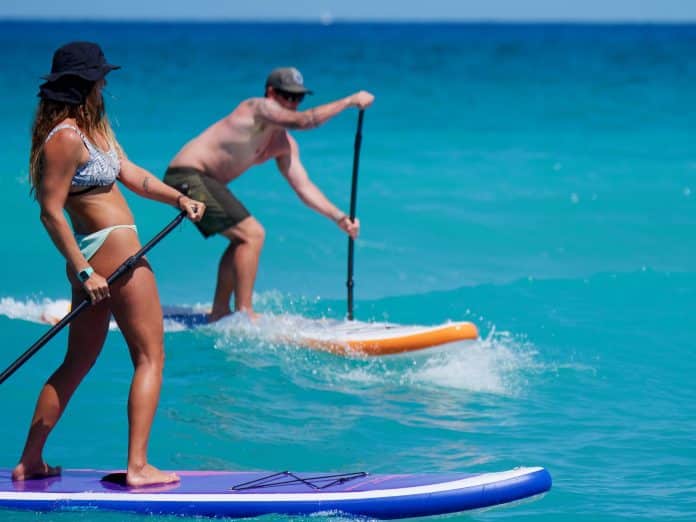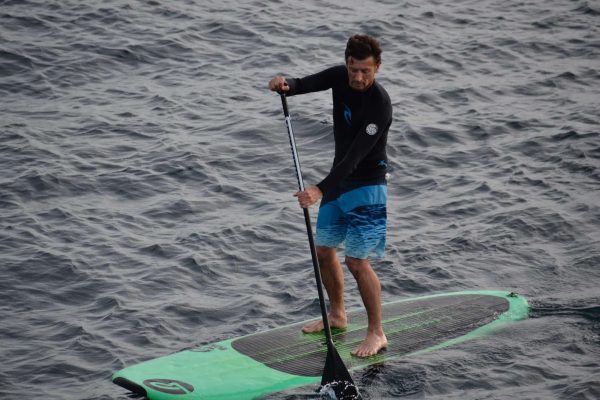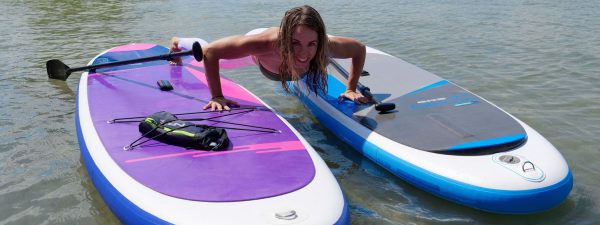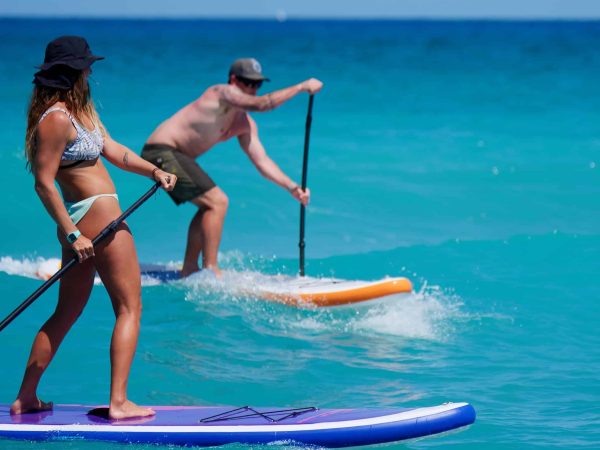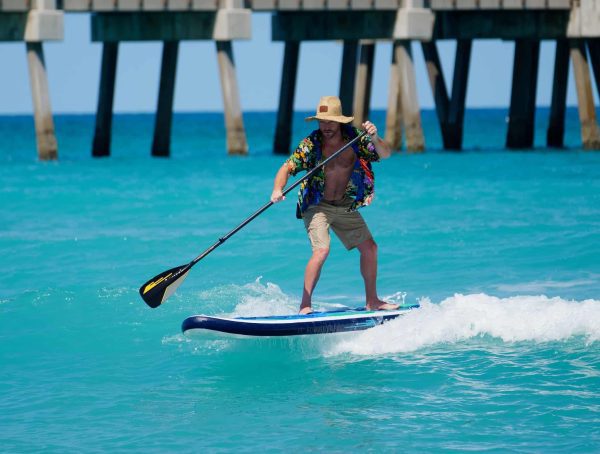Curious about the stability of heavier stand-up paddleboards (SUPs)? In this article, we explore whether a heavier SUP equates to increased stability. While it may seem logical to assume that a heavier board would offer a more stable ride, we’ll uncover the factors at play and delve into the nuances of SUP stability. Join us as we unravel the truth behind the weight-stability correlation and help you make an informed decision when choosing your trusty paddleboarding companion.
Factors influencing stability of an SUP
When it comes to stand-up paddleboarding, stability is a key factor in determining the overall experience on the water. Whether you are a beginner or an advanced paddler, having a stable board can make a significant difference in your performance and confidence. There are several factors that influence the stability of a stand-up paddleboard (SUP), and in this article, we will explore the important considerations in choosing a stable SUP. We will delve into the size and shape of the board, the volume and displacement, the weight distribution, and the material and construction.
This image is property of www.supboardguide.com.
Size and shape of the board
The size and shape of the board play a crucial role in determining its stability on the water. The length, width, rocker profile, outline, and tail shape all contribute to the overall stability of an SUP.
Length
The length of a stand-up paddleboard has a direct impact on its stability. Longer boards, typically ranging from 11 to 14 feet, tend to be more stable due to their larger surface area contacting the water. The increased length allows for a wider stance, providing better stability for the paddler. These longer boards are ideal for beginners, as they offer a larger margin of error and are less likely to tip over.
On the other hand, shorter boards, typically around 9 to 11 feet, provide a more maneuverable and responsive experience. While shorter boards may sacrifice some stability, they are preferred by advanced riders who value agility and control over stability.
Width
The width of an SUP is another crucial aspect influencing its stability. Wider boards, often ranging from 30 to 34 inches, tend to offer more stability. The increased width provides a larger platform for the paddler to stand on, allowing for improved balance and control. These wider boards are particularly beneficial for beginners or riders with a larger stature who require additional stability.
Conversely, narrower boards, typically around 26 to 30 inches, sacrifice some stability for increased speed and maneuverability. These narrower boards are favored by experienced paddlers who prioritize speed and agility over stability.
Rocker profile
The rocker profile refers to the curvature of the board from nose to tail. A higher rocker profile, where the nose and tail are lifted off the water, generally enhances stability. The increased curvature allows the board to ride over choppy water and waves more smoothly, reducing the chances of instability.
On the other hand, a lower rocker profile, where the board has minimal curvature, prioritizes speed and maneuverability over stability. These boards are designed for more advanced riders who possess the necessary skills to maintain stability despite the reduced rocker.
Outline
The outline of an SUP, or the shape when viewed from above, also affects stability. Boards with a parallel outline, where the width remains consistent from nose to tail, provide excellent stability. The parallel outline distributes the buoyancy evenly, offering a solid and stable platform for padding.
Narrower outlines, where the width of the board tapers towards the tail, prioritize speed and maneuverability over stability. These boards require a higher skill level to maintain stability, making them more suitable for experienced paddlers.
Conversely, wider outlines, where the width expands towards the tail, enhance stability due to the increased surface area contacting the water. These wider outlines provide a stable base for beginners or riders seeking enhanced stability.
Tail shape
The tail shape of an SUP influences stability by affecting how the board interacts with the water. Different tail shapes offer varying levels of stability.
A square tail, characterized by its squared-off shape, provides excellent stability. The squared-off edges increase the board’s surface area, contributing to enhanced stability on the water.
A round tail, with its curved shape, offers a balance between stability and maneuverability. The rounded edges reduce water resistance while still providing sufficient stability for most riders.
A pin tail, featuring a narrow and rounded shape, prioritizes maneuverability over stability. These tails enable quick turns and are mostly preferred by experienced riders who have mastered the art of maintaining stability in various conditions.
This image is property of www.pumpedupsup.com.
Volume and displacement
The volume and displacement of an SUP are critical factors that determine its buoyancy and stability. The volume refers to the amount of space an SUP occupies, while displacement refers to the board’s ability to displace water, affecting its buoyancy.
Higher volume boards, often indicated by their thicker dimensions, offer more stability. The additional volume increases buoyancy, allowing the board to float higher in the water and provide improved stability.
Conversely, lower volume boards are generally less stable due to reduced buoyancy. These boards are typically thinner and provide a more sporty and responsive experience, but require greater skill to maintain stability.
The displacement of an SUP, which relates to how the board pushes water aside when fully submerged, also influences stability. Boards with a greater displacement tend to be more stable, as they efficiently displace water and maintain better buoyancy.
This image is property of cdn.shopify.com.
Weight distribution
The distribution of weight on an SUP plays an essential role in its stability. Proper weight distribution helps balance the board and prevent it from tilting or tipping.
A centered weight distribution, where the rider’s weight is evenly distributed across the board, promotes stability. This distribution ensures that the weight is balanced and minimizes the chances of the board tilting to one side.
A forward weight distribution, where the rider’s weight is shifted towards the front of the board, enhances stability in certain conditions. This distribution helps keep the nose of the board down and prevents it from catching wind or being affected by choppy water.
Conversely, a rear-weight distribution, where the rider’s weight is shifted towards the back of the board, is more suitable for maneuverability and quick turns rather than stability. This distribution allows the tail of the board to sink slightly, which aids in maneuvering the board with agility.
This image is property of www.supboardguide.com.
Material and construction
The material and construction of an SUP also contribute to its stability. The choice of materials and construction techniques impacts the overall weight, rigidity, and durability of the board, which in turn affects its stability on the water.
Boards constructed with high-quality materials such as fiberglass, carbon fiber, or epoxy tend to be more stable due to their rigidity. The increased rigidity prevents the board from flexing excessively and provides a more stable platform for paddling.
Additionally, the construction method, such as solid or inflatable, can influence stability. Inflatable SUPs, particularly those designed with multiple air chambers, offer excellent stability, as the increased volume and buoyancy enable enhanced stability on the water.
This image is property of cdn.shopify.com.
Conclusion
Choosing a stable SUP is vital for an enjoyable and safe paddling experience. When considering the stability of an SUP, it is important to assess factors such as the size and shape of the board, volume and displacement, weight distribution, and material and construction. Longer and wider boards typically offer more stability, while boards with a higher volume and displacement are more buoyant and stable. The weight distribution should be balanced or tailored to specific conditions, and the choice of materials and construction can impact the board’s rigidity and stability. By understanding these factors, stand-up paddleboarders can make an informed decision to find an SUP that best suits their stability needs and enhances their overall paddling experience.

